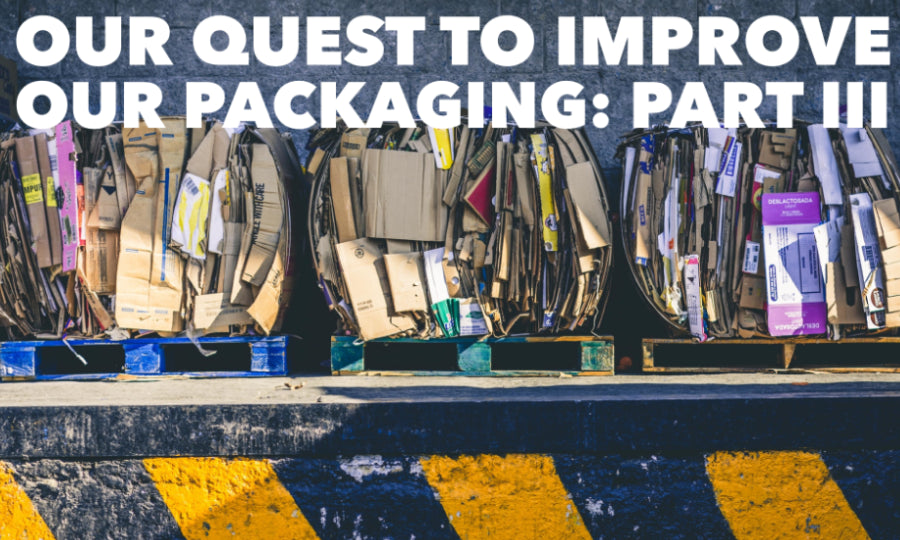Your Cart is Empty

One thing we are discovering as we explore alternative packaging ideas is that where you seem to win on one aspect, you potentially lose on another. However, we are persisting with our task and we’re pretty tenacious!
Step 11 - we’ve found a UK based company that tests products. A helpful account manager calls us with lots of information and we’ve learnt a fair bit from them:
Step 12 - following this very interesting conversation, we then spent the weekend googling biodegradable / compostable / recycle and getting confused!
Step 13 - an email arrives from a packaging supplier we use mentioning a new bag made from sugar cane; apparently it is a new ‘eco bag’ and it’s claimed to be 100% recyclable. It is green polythene, helps reduce greenhouse gases and sugar cane captures CO2. This blurb also says that biodegradable alternatives cannot be recycled and simply just degrade in to small pieces which eventually could be banned in Europe within the coming years.
But where can you recycle it? Any polybags in my home recycling bin would get me a telling off from the council as they aren’t allowed. More questions raised!
In the meantime we email a testing company to ask how much to test for biodegradability and compostability or both.
Step 14 – we find a company that designs and creates packaging, and their website has lots on sustainability. We call them and they ask us to email them with my budget and delivery date required. My main priority is finding packaging that is good and not necessarily for a specific date as these will be rolled out across the board going forwards; urgency is not critical but quality is. Managed to ascertain that in fact they are all just off in to a meeting and that Mondays are busy days..! I email them with my requirements instead!
Comments will be approved before showing up.